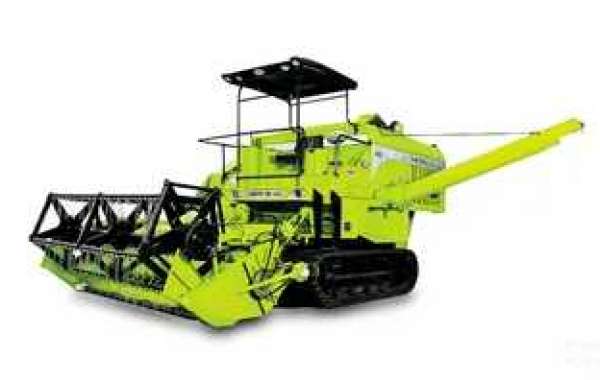In the vast and diverse landscape of Indian agriculture, the implementation of modern farming equipment has become crucial to meet the ever-growing demand for food. Paddy harvesters have emerged as a transformative solution, revolutionising the way farmers in India approach the harvesting of rice crops. In this blog, we'll delve into the significance of paddy harvesters, their impact on Indian agriculture, and the benefits they bring to farmers across the country.
The Need for Innovation in Rice Harvesting
Rice, a staple food for a significant portion of the Indian population, has been traditionally harvested by manual labour. However, the labour-intensive nature of traditional methods posed challenges such as increased costs, labour shortages, and a significant time investment. As the demand for rice escalated, there arose a pressing need for innovative solutions that could address these challenges and enhance overall efficiency in the harvesting process.
Enter Paddy Harvesters
Paddy harvesters, also known as rice combine harvesters, have emerged as a game-changer in the agricultural sector. These machines are designed to streamline the harvesting process, offering a range of benefits to farmers.
- Increased Efficiency and Productivity:
Paddy harvesters significantly reduce the time and labour required for harvesting. With their automated systems, these machines can cover large expanses of rice fields efficiently, ensuring a quicker turnaround from planting to harvest. This boost in productivity is essential for meeting the growing demand for rice in India.
- Labour Savings:
Traditionally, rice harvesting involved a substantial workforce, leading to increased labour costs. Paddy harvesters help address this issue by automating the harvesting process, reducing the dependency on manual labour. This not only saves costs for farmers but also addresses the challenge of labour shortages in rural areas.
- Preservation of Crop Quality:
Paddy harvesters are equipped with advanced technologies that allow for precise cutting and collecting of rice crops. This precision helps in preserving the quality of the harvested grains, reducing losses due to damage or mishandling. The result is a higher-quality yield for farmers.
- Adaptability to Different Field Conditions:
One of the notable features of paddy harvesters is their adaptability to diverse field conditions. Whether the terrain is flat or undulating, these machines can navigate through various landscapes, ensuring that farmers in different regions can benefit from this technology.
- Cost-Effectiveness:
While the initial investment in a paddy harvester might seem significant, the long-term cost-effectiveness cannot be overlooked. The savings in labour costs, increased productivity, and reduced post-harvest losses contribute to a positive return on investment for farmers over time.
- Post-Harvest Residue Management:
Paddy harvesters not only efficiently harvest rice but also address the challenge of post-harvest residue management. Some models come equipped with features that facilitate the collection and processing of crop residues, promoting sustainable and eco-friendly farming practices.
Challenges and Considerations
While paddy harvesters offer numerous advantages, it's essential to consider the challenges associated with their adoption. Factors such as initial investment costs, the need for skilled operators, and maintenance requirements must be taken into account. Additionally, effective training programs and support from agricultural extension services can play a crucial role in ensuring that farmers maximise the benefits of this technology.
The Future of Rice Harvesting in India
As technology continues to advance, the future of rice harvesting in India looks promising. Innovations such as GPS-guided paddy harvesters, automated crop monitoring, and data analytics are being integrated into modern farming equipment. These technologies not only enhance efficiency but also contribute to precision farming practices, allowing farmers to make data-driven decisions for optimal crop management.
Government Initiatives and Support
Recognizing the transformative impact of paddy harvesters on Indian agriculture, the government has initiated various schemes and subsidies to encourage the adoption of modern farming equipment. These initiatives aim to make advanced agricultural machinery more accessible to small and marginal farmers, ensuring that the benefits of technology reach all sections of the farming community.
Conclusion
Paddy harvesting machines have undeniably played a pivotal role in modernising rice harvesting practices in India. From increasing efficiency and productivity to addressing labour challenges, these machines have become a cornerstone of contemporary agriculture. As technology continues to evolve, the integration of smart farming practices and precision agriculture with paddy harvesters holds the key to further enhancing the sustainability and profitability of rice cultivation in India. The journey towards a more efficient and technologically advanced agricultural sector is well underway, with paddy harvesters leading the charge.










